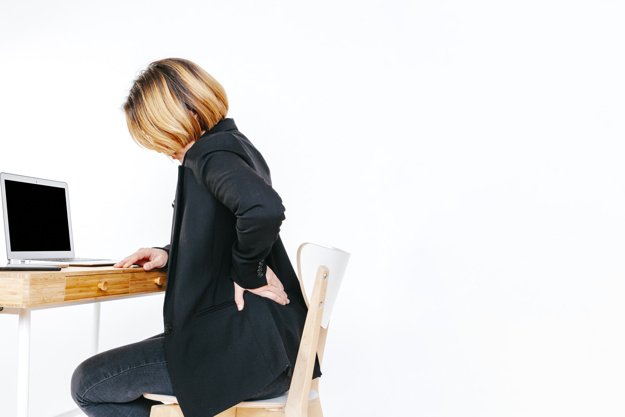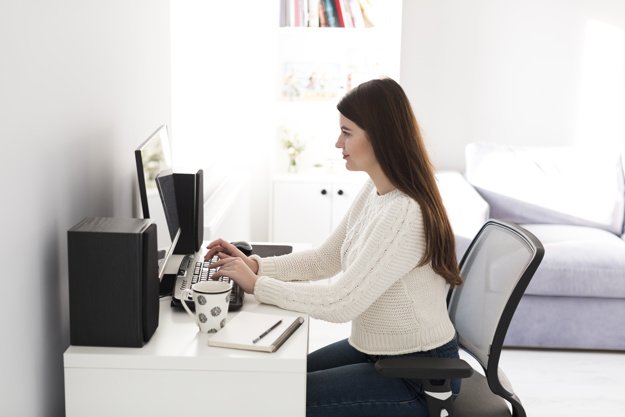Menu
Lower back pain is of the most usual complaints of discomfort that occurs in the back, between the ribs and the legs. While most occurrences go away on their own for days, many people are suffering from chronic back pain, restricting their mobility and interferes with their normal function.

Defining the exact cause of lower back pain can be hard, but in most instances, back pain may be a sign of underlying causes such as:
A series of muscles and ligaments in your back carries the bones of your spinal column in its position. When the muscles are frequently stretched, it causes tiny tears in the muscles, resulting in muscle strains and sprains. Muscle strains happen when muscle fibers are torn or stretched unusually. Muscle sprain occurs due to ligaments that are ripped from where they are attached.
The back has a normal spine curve that helps support the body and its movement. This standard position of the spine is most effective when it is in its neutral position. When a person is overweight, additional pressure is added in the midsection that shifts the pelvis forward, causing an excessive spinal curve inside.
Muscle tension occurs in different areas of the body and slowly increases due to movements or pressure. If back muscles are involved, it causes pulling pain in the area of the lumbar spine, characterized by sudden pain, restricting mobility.
Joint problems such as spinal stenosis is a narrowing of the spinal canal that causes the nerves to compress that travels through the lower back into the legs. This condition commonly affects people aged 60 and older, typically affects the lower part of the lumbar spine.
Back injuries often occur during sports or recreational activities and work-related tasks. It also happens when you're doing activities that you don't usually do, such as lifting heavy objects.

Pregnancy is commonly accompanied by low back pain, which results from pelvic changes and alterations in weight loading.
Back pain is common as we age, and it typically occurs between ages 30 and 50. The bone loses its strength over time due to osteoporosis, which leads to fractures. It also decreases the muscle's elasticity and tone. The intervertebral discs (lies between adjacent vertebrae in the vertebral column) start to lose fluid and flexibility as we age, causing them to reduce their ability to soften the vertebrae.
People having a sedentary lifestyle and lack of physical fitness are prone to back pain. It weakens the back and abdominal muscles, leaving the spine having no proper support.
A 2011 study discovered evidence on genetics and lumbar disc disease that back pain could run in families. Moreover, a condition caused by degeneration or herniated discs in the lower back or lumbar disc disease may also be inherited.
Whether your job requires heavy lifting or an inactive desk job, both of these contribute to back pain. Having poor posture in your desk or sitting all day in a chair without sufficient back support may cause discomfort. A job that continually requires pushing and pulling may also be a culprit in back pain, as it twists and vibrates the spine.

Our movements and daily habits, as well as our diet intake, has a high impact on our body, and people often neglect these. The spine is responsible for carrying the body's structure and is necessary to maintain its flexibility and strength.
Here are four tips for you to maintain a healthy spine and improve your back pain problems.
Daily activities that we usually do can cause a lot of tension to the spine, especially those that involve lifting a heavy load. As much as possible, avoid tremulous movements when dealing with bulky items and never twist your back.
Also, when picking up something from the ground, keep your hips and knees bent while maintaining your back straight to avoid too much pressure on your spine.
Maintaining a good posture has a huge positive impact on overall health. Poor posture, such as slouching, can weaken the spine and may even lead to fatigue or back pain in the long run.
Bear in mind to always stand straight, with the shoulders pulled back. Keep your head up and avoid tilting. If you're sitting for an extended period on your desk, always sit with a straight spine while keeping the computer's screen level to your neck.
A balanced diet is highly beneficial for overall health. Switch to healthier food choices that contain calcium, which is excellent for the bones. A healthy and balanced diet that includes an accurate amount of nutrients helps lessen back problems while keeping the discs, bones, and other parts of the spine nourished.
The spine is the main structure that provides support to the entire body, and keeping it healthy and strong is crucial.
As you age, movement restrictions are a common concern. There are specific exercises you can perform to keep your spine flexible. Keep your body moving by incorporating walking, working out, walking, and aerobics to your daily habits.

Back pain is commonly caused by prolonged sitting in an office chair without adequate back support. Sitting forces your body to a straight position, which puts stress on the discs and muscles of your spine.
Many people also tend to slouch in their seats, neglecting their posture while sitting. This negligence can contribute to the continuous stress in the lower back, which results in discomfort.
However, there is a convenient solution to lower back pain – lumbar support pillows.
Lumbar support for office chairs is ergonomically designed to keep you in a neutral position while sitting.
Lumbar support pillows help correct poor posture adjusting the alignment of the neck, shoulders, and upper spine while providing instant relief from back pain. Lumbar support cushions help loosen the muscles in the lower back to alleviate the sore and discomfort.
While lower back pain is usually harmless, the discomfort the pain brings can be weakening. Seek for medical health soon after your back pain occurs. You can also alleviate the pain by following the tips above, specifically doing regular exercise and maintaining a healthy lifestyle. If you also feel the need to try an alternative device to ease your distress from your office chairs without back support, a lumbar support pillow can be a fantastic option too.
Check out more further information on Lumbar Support below to know more.
Related Articles:
Correcting Postural Defects On The Run With Lumbar Support
Comprehensive Facts About Lumbar Support
Featured in: